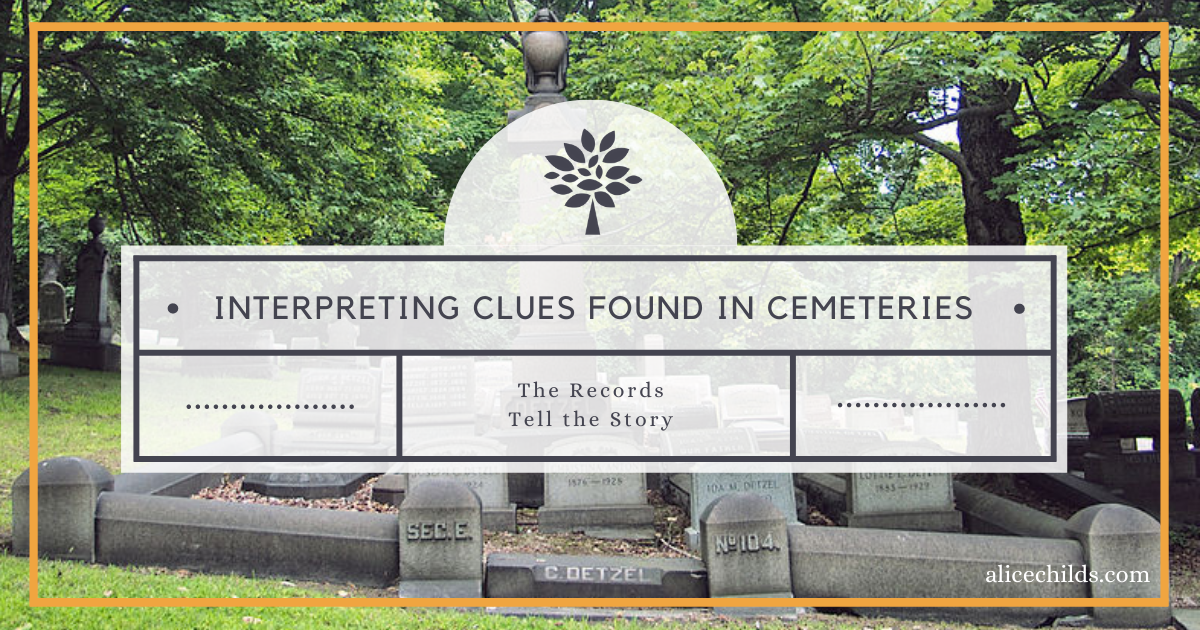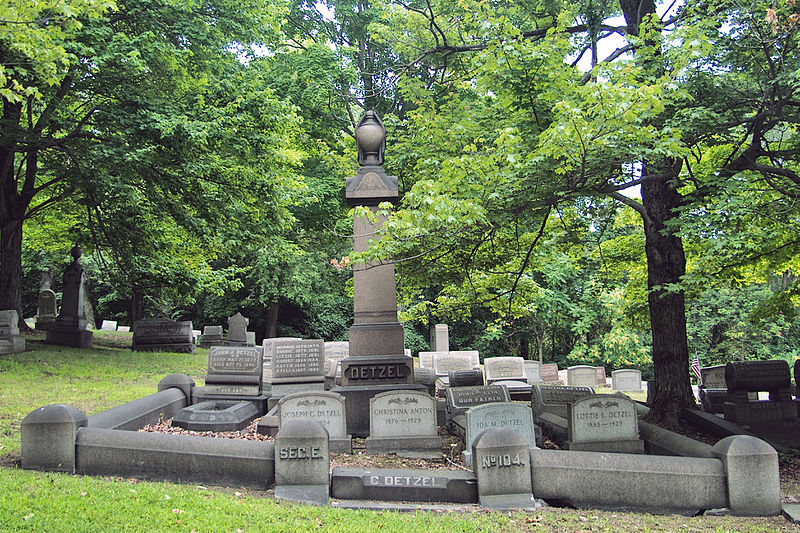
In my last post I discussed the value of cemetery records and how to find them. Today I want to talk about clues that can be discovered in the cemetery and on the gravestones themselves.
Clues Found In Cemeteries

Johni Cerni teaches that cemeteries can provide clues about the origins of our immigrant ancestors [1]:
- A large name stone in the center of a grouping with smaller stones around it bearing only given names may indicate Swedish origins.
- Swedish cemeteries will have gravestones in gray, sand, pink, and other warm, soft colors. The setting will feel uncluttered and open, with minimal data on the headstones.
- If the smaller gravestones centered around a larger one have relationships or initials only inscribed on them, it may indicate German origins.
- Polish graves will have large, heavy black or red gravestones in rows, with precise dates and often the original spelling of the surname.
- Early New England and Virginia origins are shown by ornate carvings of winged death heads, weeping willows, and all-seeing eyes on large gravestones that include essential facts and a scriptural verse. These large stones are often interspersed with flat, biographical gravestones giving details of family relationships.
- Quaker gravestones were typically exactly twelve inches high until well into the 19th century and may have been cut down to size if they measured too large, thus cutting off some of the inscriptions.
Cemeteries can provide additional clues about the context of our ancestors’ lives [2]:
- The presence of many gravestones with similar death dates can indicate an epidemic, a weather disaster, a mine accident, or something similar.
- Many cemeteries have special sections for specific kinds of burials. Paupers could be buried in one section, persons of African or Native American descent could be in a “colored” section. There could be religious sections, and sections for those who died without religious sacraments buried in the “unconsecrated” section of a church cemetery.
- If a couple is buried in separate cemeteries, perhaps they separated in life, or one spouse died early and the other remarried.
Clues on Gravestones
Courtney Henderson has discussed how gravestone materials can provide clues about dates and whether the headstone might have been placed near your ancestor’s time of death or later [3]:

- Prior to the 1650s, people used mostly fieldstones or rough-cut rocks.
- 1660s-1850s – Headstones were made of sedimentary rock, like red or brown sandstone or limestone, and dark slate.
- 1830s-1880s – Marble was the stone of choice.
- 1880s-present – Granite is the typical marker.
Gravestone symbols also provide clues about our ancestors: their virtues, their values, their occupation, or their religion. Find common gravestone symbols and their meanings in this article from Family Tree Magazine along with their free tombstone iconography guide download here.
Epitaphs are another way to learn more about your ancestors. In her article “Surprising Genealogy Clues Carved in Stone, Kimberlie Guerrieri shared photos of several gravestones whose epitaphs told stories of the demise of the deceased from murder to disease and other tragedies.
Cemeteries can be a wonderful source for gathering clues about our ancestors. What have you discovered about your ancestors in cemeteries?
[1] Johni Cerny, “Cemetery Records,” RootsWeb (https://wiki.rootsweb.com/wiki/index.php/Cemetery_Records : accessed 19 Mrch 2021; original article appears in “Vital Records,” The Source: A Guidebook to American Genealogy. [2] Ibid. [3] Courtney Henderson, “The Hidden Meanings of Common Gravestone Symbols,” FamilyTree (https://www.familytreemagazine.com/cemeteries/hidden-meanings-gravestone-symbols/ : accessed 19 March 2021).
